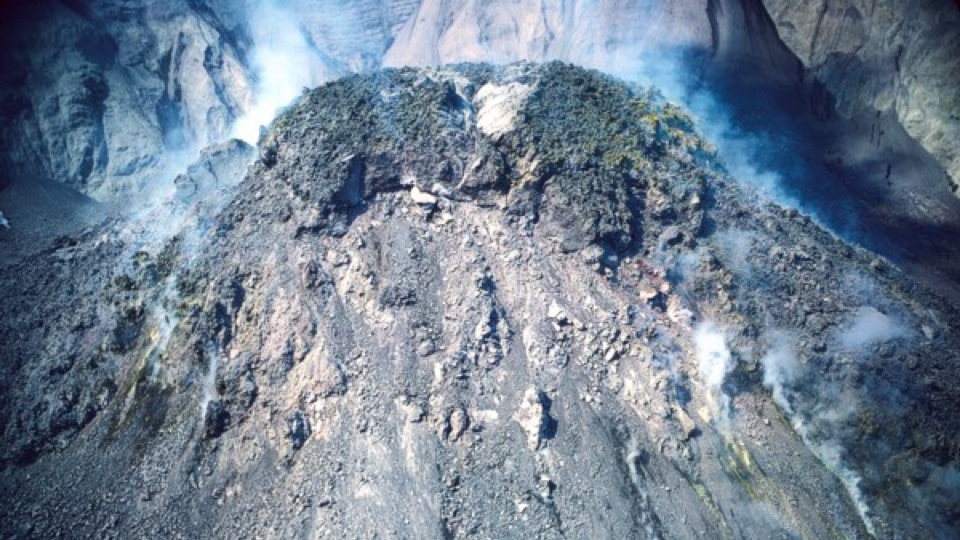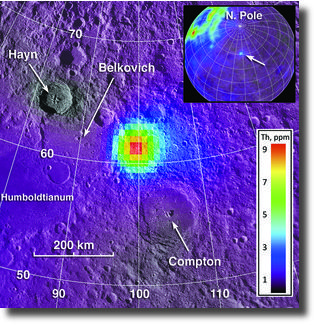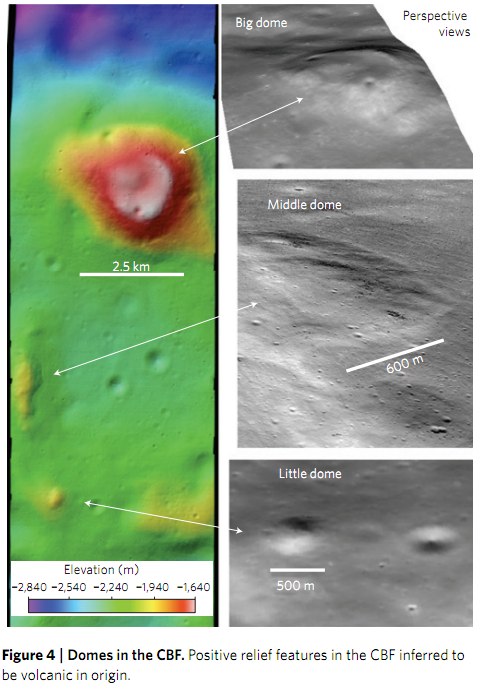Like the Mt. Saint Helens volcano, pictured above, these recently-discovered Moon volcanoes formed giant lava domes that probably erupted in gouts of superheated gas and ash.
When you look at the Moon, you're seeing the aftermath of hundreds of volcanic eruptions. All those dark spots on the satellite's surface are deposits left from basalt rocks - mostly ejected onto the Moon's surface after meteorite hits. Until now it was believed that all volcanoes on the Moon erupted with liquid basalt, a thin, runny lava that spreads rapidly. But the shape and mineral composition of the newfound volcanoes resemble those of "dome volcanoes" on Earth. They're not predominantly basalt; instead they've erupted with rocks and minerals whose liquid form is viscous, like honey.
On Earth, dome volcanoes can be the most destructive and deadly. When the domes of lava form, they trap hot gas bubbles that eventually explode, releasing rock and ash at temperatures of up to 1,200 degrees fahrenheit. The famous ancient city of Pompeii was destroyed by a dome volcano, Mt. Vesuvius. And now planetary scientist Bradley Jolliff and his team argue that such volcanoes exist on the Moon as well. Their evidence is based on images and x-ray scans from the Lunar Reconnaissance Orbiter.
At left you can see what astronomers call the "Compton-Belkovich Thorium Anomaly," an unusual concentration of thorium that we now believe came from dome volcanoes. Higher regions are red, and lower ones are blue. The anomaly, according to researchers, is "northeast of Humboldtianum basin and just beyond the Moon's eastern limb." In a Nature Geoscience article about the discovery, Noah Petro explains:
They identify numerous dome-like features, each several kilometres across, which are interpreted as volcanic cones, built up during the eruption of volcanic rocks from a vent in the surface. The cones have very steep sides, implying that the erupted lavas were extremely viscous.That viscosity was another tipoff that we might be dealing with a non-basalt volcano here.
And here are some more images of the anomaly, including pictures of the domes.
Though it's not likely to erupt any time soon, this seemingly out-of-place volcano shows that we still have a lot to learn about the Moon.
Read the full scientific article via Nature Geoscience. All illustrations taken from Nature Geoscience.






Reader Comments
to our Newsletter